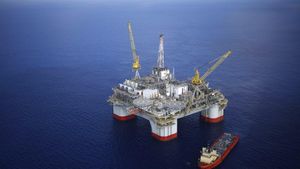Electro-hydraulic actuators (EHUs), integral to modern machinery from vehicles to aerospace systems, often face challenges when it becomes necessary to adapt to changing speeds, pressures, and other operational factors. A recent study published on February 1, 2025, delved deep to unravel how variations in working conditions can dramatically influence the lubrication characteristics of the internal pumps within these systems. Researchers highlighted the need for refined lubrication under dynamic conditions, as inadequate lubrication leads to wear and affects the reliability of EHUs.
The core of the study focused on the gear ring/shell friction pair within EHA internal pumps, which are uniquely positioned to handle complex operational scenarios. To achieve this, the authors employed advanced simulation techniques combining Simerics-MP+ and MATLAB, producing insights validated by experimental measurements. The simulation model yielded highly accurate predictions for oil film variations, with discrepancies of less than 7.6%. This impressive precision points to the reliability of the modeling framework established during the study.
Key findings revealed pertinent details about how lubrication behaves under diverse working conditions. Specifically, when the direction reversing rate increased from 20,000 rpm/s to 40,000 rpm/s, the average oil film thickness surged by 23.64%. Conversely, reductions in speed or increases in load pressure led to deteriorated lubrication characteristics. These results highlight the precarious balance between operational demands and maintenance of lubrication stability.
Interestingly, the study confirms prior assumptions within the field: the reduction of speed and increases in pressures do significantly disturb the lubrication characteristics. For example, lowering the direction reversing pressure from 10 MPa to 5 MPa enhanced average oil film thickness by 22.39% and stabilized the fluctuational rate, demonstrating the cascading effects of operational conditions on lubrication dynamics.
Another significant insight is the modeled behavior of lubrication throughout the switching phases during pump-motor transitions. The research showcased how increasing the switching rate improved lubrication status, eleving the oil film thickness by 10.33% as the rate surged from 10,000 rpm/s to 40,000 rpm/s. This emphasizes the potential for optimizing conditions even during system transitions.
This research serves as a springboard for future explorations aimed at improving lubrication within EHA systems. Among the myriad techniques worth investigating is the application of surface micro-texturing technology, which promises to bolster lubrication characteristics by manipulating surface properties to improve performance under changing conditions.
The acknowledgement of factors affecting oil film thickness through variations underscored the sensitivity and intricacy of lubrication dynamics. Researchers suggest ensuring stability within the pump system to minimize fluctuations brought on by environmental elements and operational nuances. By establishing clearer frameworks for lubrication stability, the insights offered by this study can be instrumental for future innovations aimed at enhancing the efficacy and reliability of electro-hydraulic elements.
Overall, this advanced joint simulation model illuminates the relationship between operational dynamics and lubrication conditions, providing engineers and researchers with actionable insights to inform design improvements. Continued exploration toward optimizing these systems could not only improve the lifespan of pumps but also extend the functionality of electro-hydraulic applications across various industries.



